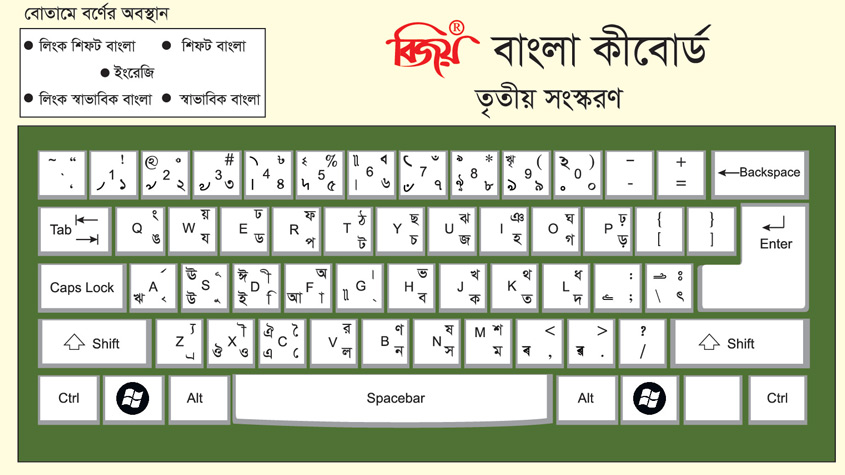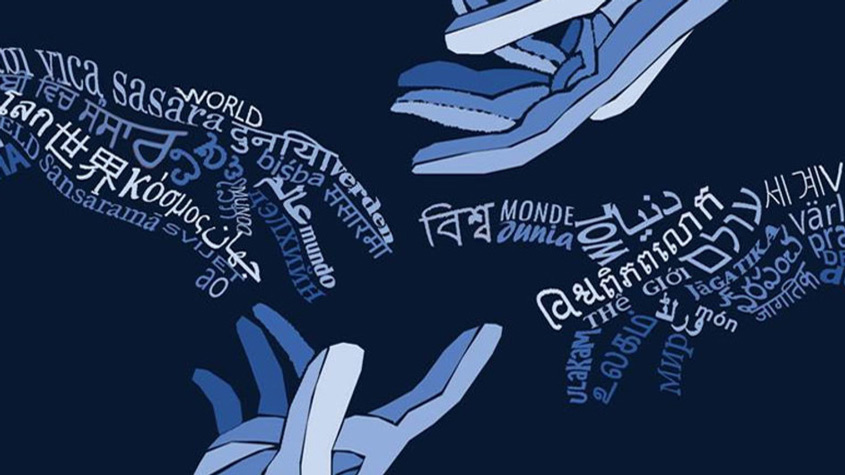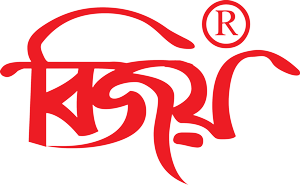Although Bangla is the seventh most-spoken language in the world, there was no well-functioning, simple and easy-to-use software for typing in this language until the late 1980s. Understanding the need for a feasible Bangla input software and script writing interface, Mr. Mustafa Jabbar, a Bangladeshi journalist, developed software and a keyboard layout, which greatly changed the printing and publishing industry in Bangladesh. The Bijoy Bangla Software and Keyboard Layout grew popular among users, and Mr. Jabbar has benefited from intellectual property (IP) protection for his widely-used Bangla script writing interface system.

Mr. Jabbar is from a rural village in Bangladesh and would later attend the University of Dhaka, where he majored in Bangla Language & Literature. He began his career as a journalist in 1972, while still a student. He started a computer business in 1987, but technological limitations were particularly constraining for the printing and publishing industries in Bangladesh and other Bangla-speaking regions. Mr. Jabbar considered ways to overcome the technological limitations of the Bangla script writing system in these industries. He started by creating some Bangla fonts and subsequently developing the Bangla software and a Bangla keyboard layout known as “Bijoy.”
Bijoy has established itself as one of the top Bangla script writing interface systems among a community of 350 million Bangla-speaking people. In fact, the Bijoy Keyboard Layout (BDS 1738:2018) and Bijoy Coding System (BDS 1935:2018) were declared to be the national standard Bangla Script Writing in Bangladesh, making it the only standard for Bangla script writing in the world.
Despite increasing competition from other Bangla writing systems, Mr. Jabbar’s pioneering role in the invention of the Bijoy Bangla Script Writing Interface System and promotion of information and communication technology (ICT) has been recognized by the Bangladeshi Government. In 2018, Mr. Jabbar was appointed as Minister of the Ministry of Post, Telecommunication and Information Technology in Bangladesh.
A keyboard is born
The main challenge Mr. Jabbar faced was accommodating the hundreds of Bangla characters, including additional vowels and consonants and consonant conjuncts, within a standard Macintosh keyboard in a QWERTY layout. At the time, there were already at least two other Bangla keyboard layouts: the “Munir” keyboard, which was developed in 1969 for use in typewriters; and the “ShahidLipi” which was the first complete Bangla font for computers.
Mr. Jabbar wanted to overcome many of the limitations associated with the existing options by developing a new Bangla interface with a new layout. A breakthrough came one and a half years of continuous work with the release of the first version of the Bijoy Bangla Software in 1988. The software was initially programmed by an Indian programmer named Mr. Devendra Joshi, but later developed by Mr. Jabbar’s own team of programmers in Bangladesh, while the Bangla keyboard layout and font designs were created by the inventor himself.

Although the Bijoy Bangla Software was initially developed for the Macintosh operating system, it was later released for Windows, Linux and Android operating systems. With humble beginnings of one font family, Bijoy Bangla Software now hosts more than 110 font families. The software is also compatible with Unicode (BDS 1520: 2018) and ASCII (BDS 1935) coding systems. Moreover, the Bijoy Bangla Script Interface System is also compatible with Asamese script.
What’s in a name?
Mr. Jabbar believes that the success of creating the right brand name rests upon how effectively these names can touch the heart of the people and at the same time reflect the characteristics of the products. In that regard, he chose to name his software and keyboard layout “Bijoy” (Bangla for “victory”) and planned the release of the first version of Bijoy to coincide with the Victory Day of Bangladesh on December 16, 1988. Another version of Bijoy was named Bijoy Ekattor (Bijoy 71) in reference to the historical Bangladesh War of Independence of 1971.
Subsequent versions of the software have also been named in a similar fashion, including Bijoy Ekushey (Bijoy 21) and Bijoy Bayanno (Bijoy 52), commemorating February 21, 1952, an emotional date in the Bangla Language Movement, which ended in the recognition of Bangla as an official language of Bangladesh.
February 21 is not only a very important event in the history of Bangladesh and all Bangla-speaking people. In 1999, the United Nations Educational, Scientific and Cultural Organization (UNESCO) declared the date “International Mother Language Day” in tribute to the Bangla Language Movement, as part of a growing recognition of linguistic and cultural diversity around the world.

Commercialization
Soon after the development of the Bijoy Bangla Script Writing Interface System, Mr. Jabbar established his own company, Ananda Computers, and has continued to improve the system by developing new versions of the software. For example, the first version of the Bijoy Bangla Software was developed only for use on Macintosh computers, but he introduced a Windows operating system version in 1993.
One of the key points for commercialization success was the continued efforts of Mr. Jabbar and Ananda Computers to develop compatible versions of the product for all computing platforms (and later, smartphones). The creation of diversified fonts has also been important for success. A large team of programmers and designers are working continuously to further develop the product, while a service and support team handles customer service and related inquiries.
The commercialization of the Bijoy Bangla Script Writing Interface, including the IP protection they acquired, was revolutionary. Ananda Computers, led by the farsighted Mr. Jabbar, was able to correctly identify the commercial potential of his company’s IP assets. He was able to further capitalize on the value of the assets not only by selling his product, but also by licensing the Bijoy Bangla Software and Bangla Keyboard Layout, for which he is able to collect licensing fees. This achievement was made possible by IP protection.
IP assets making history
The iconic Bijoy Bangla Script Interface System was first protected as a literary work under copyright law in Bangladesh in 1989. This was the first time that software had been protected as such. Later versions were also copyrighted, including the second edition in 2004 and the third edition in 2017.
Thinking in terms of other protection opportunities, Mr. Jabbar applied to protect the second version of his software using a patent in 1992. When Mr. Jabbar applied for the patent, there was not a single person in the responsible department who could perform the substantive examination necessary to determine patentability. The patent application was not granted.
Back in our time there was no procedure to register software, but where there is a will, there’s a way.Mustafa Jabbar, founder of Ananda Computers
Mr. Jabbar did not apply again until 2004, when an official was willing to take responsibility for the inspection. Following the submission of his application, it would take another four full years for the system to be patented. This was monumental and still holds relevance today, because Mr. Jabbar is the rights holder of the one and only software patent in Bangladesh.

Improved versions were gradually developed to overcome shortcomings of previous versions as well as to cope with newer versions of operating systems and hardware upgrades. A team of programmers under the guidance of Mr. Jabbar is dedicated to regularly improving the Bijoy Bangla Software, and any IP developed by the staff at Ananda Computers is retained by Mr. Jabbar.
In addition, Mr. Jabbar recognized the growing importance of the term, not only as the word for “victory” in Bangla, but also as the identifier of his company and the goods and services it provides. He registered a trademark for the “Bijoy” logo in Bangladesh with the Department of Patents, Designs and Trade Marks (DPDT) in 2004. The mark is applicable to Class 9 of the Nice Classification in respect of computer software and hardware products.
Licensing
Several licensing contracts have been signed between Ananda Computers and a few dozen computer vendors in Bangladesh who import keyboards from China with the Bijoy Keyboard Layout. According to the contract, the Chinese company produces and exports the printed keyboards with the Bijoy layout to Bangladesh and Mr. Jabbar’s company receives licensing fees from the vendors for each keyboard sold. There are also local keyboard producers who are interested in using the Bijoy Keyboard Layout with their hardware.
Protecting IP rights
In the mid-2000s, the popularity of the Bijoy Bangla Script Writing Interface System resulted in rampant piracy of the Bijoy Bangla Software. Mr. Jabbar took alternative means to combat the misuse of his IP, by lowering the price of his product to nearly that of the pirated products. Furthermore, he worked with vendors to sell authentic products. This has proved to be a successful model for the business.
Moreover, counterfeits of the Bijoy Keyboard Layout were increasingly imported from abroad. To protect his IP investments and brand image, Mr. Jabbar submitted a request to the National Board of Revenue (NBR) of Bangladesh concerning this matter. In 2008, after assessing the issue and confirming that Mr. Jabbar was indeed the patent owner of the Bijoy Keyboard Layout, the NBR issued a circular asking the Bangladeshi customs department to prohibit and confiscate the import of fake Bijoy goods.
I hope that if I can continue my success the example will encourage many local software developers to get patent rights and earn royalty from their products.Mustafa Jabbar
The next enforcement opportunity occurred in 2003 when another company, Omicron Lab, developed an open source Bangla typing software “Avro” which was free of cost. Avro includes a phonetic keyboard which automatically converts words written in roman characters into Bangla characters. However, Avro also incorporated the option for another keyboard, the Unibijoy Keyboard, which essentially uses the Bijoy Keyboard Layout with a few stroke differences.
Omicron Lab did not deny the similarity; in fact they claimed that their Unibijoy Keyboard Layout was 99 percent similar to the Bijoy Keyboard Layout. Prior to releasing the Unibijoy Keyboard, Omicron Lab had contacted Mr. Jabbar for permission to use his keyboard layout, but both sides were unable to reach an agreement. Nonetheless, the developers at Omicron Lab incorporated a slightly-modified version of the Bijoy Keyboard Layout into their software.
As a consequence, Mr. Jabbar took action by informing the Copyright Registrar of Bangladesh of the infringement and requested assistance in the enforcement of his copyright. The Registrar issued a show cause notice against Omicron Lab in May 2010, which required them to appear before a court. In June 2010, the two parties reached an informal agreement for a peaceful solution under which Omicron Lab would remove the Unibijoy Keyboard from Avro. Finally, Omicron Lab removed the Unibijoy Keyboard and Mr. Jabbar withdrew the case in August 2010.
Key success factors: understanding market demand
One of the major factors behind Mr. Jabbar’s success was his understanding of what his target market needed. He was quick to realize that with the advent of computerization, there would be a growing demand for computing software in Bangla and that the market would be anything but small.
At the same time, Mr. Jabbar recognized the importance of IP, and he was aware that the sustainability and growth of his business hinged upon the due protection of his IP rights. A combination of these two factors has allowed Mr. Jabbar to retain the competitive edge of his inventions ever since the first version of the Bijoy Bangla Script Writing Interface System was released in 1988.
The progress and prosperity, the economic development of the whole world will be just what kind of intellectual property anybody has, so I think the most critical and important area of a nation is how much intellectual property they are developing. That’s the key point in the digital age, and I think that a very key point of the success of Bangladesh.Mustafa Jabbar
Source: WIPO

 Client Focus
Client Focus